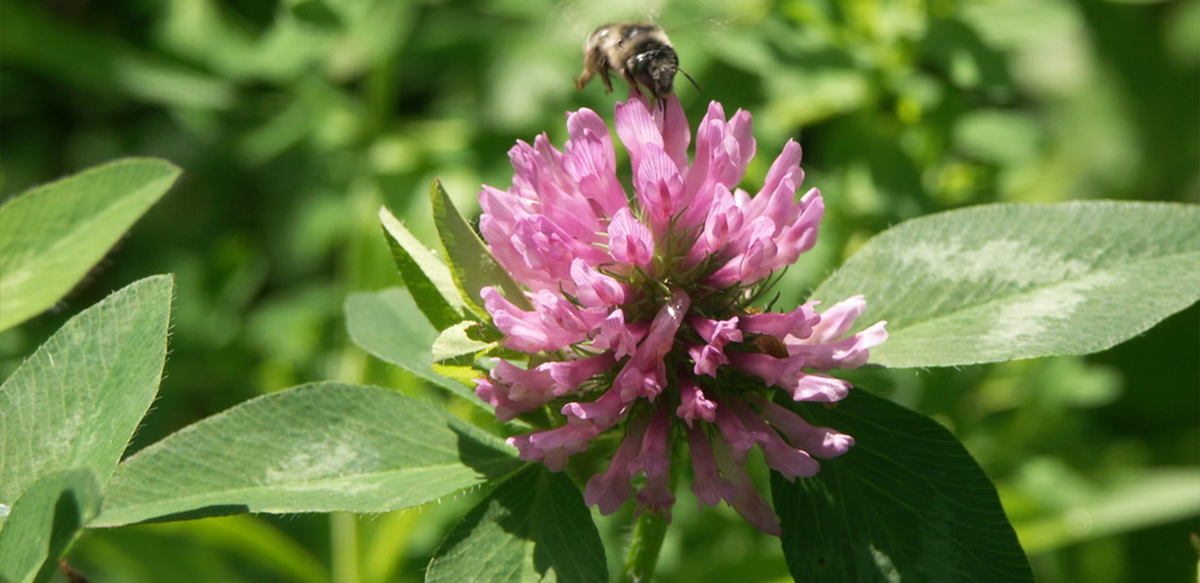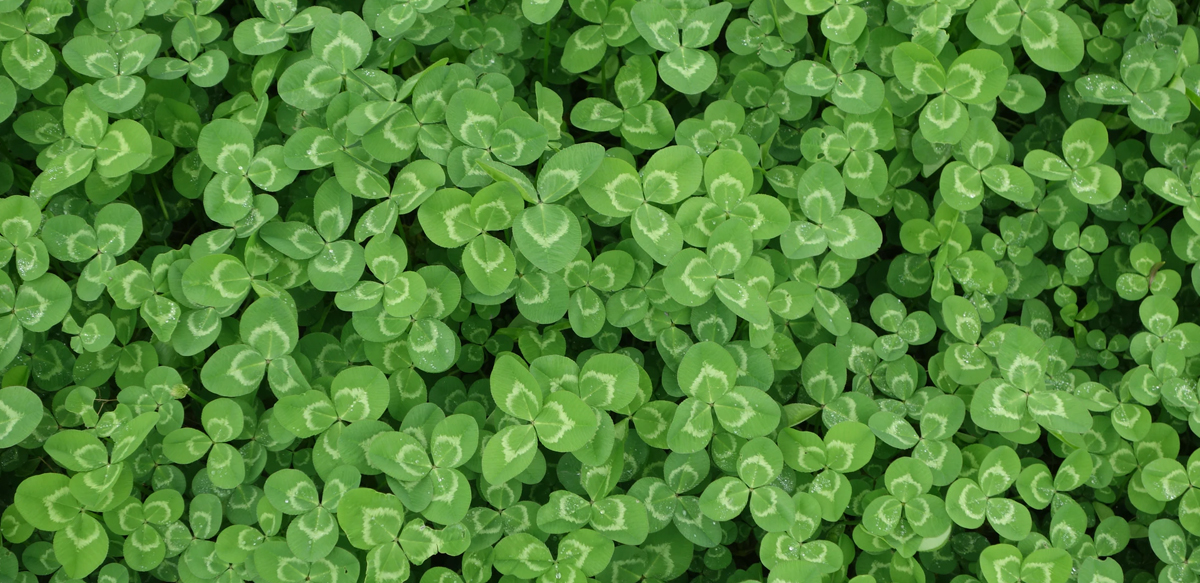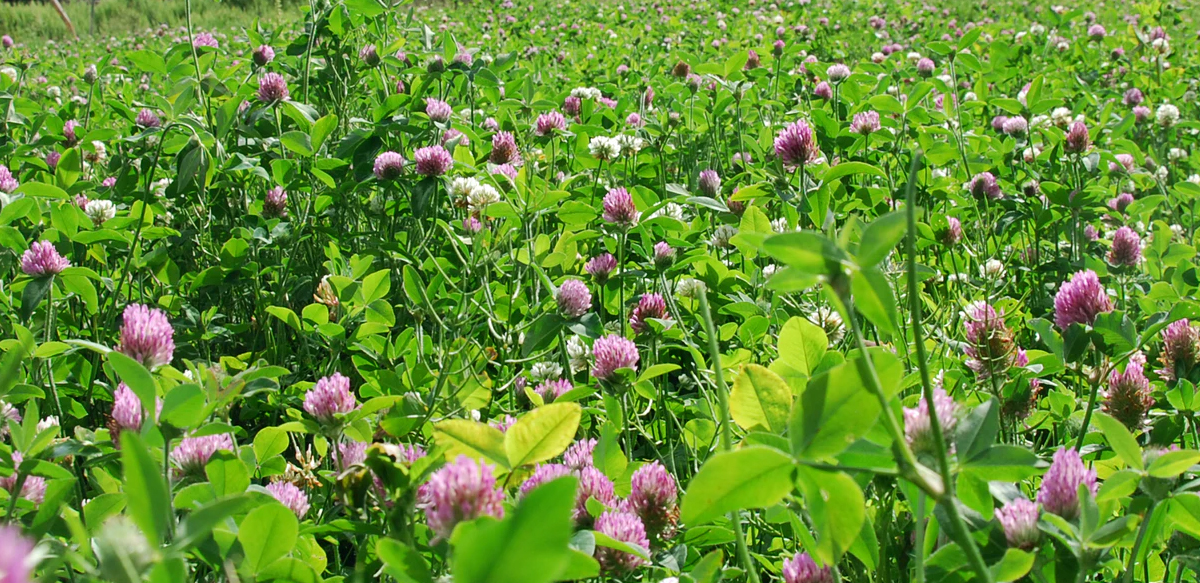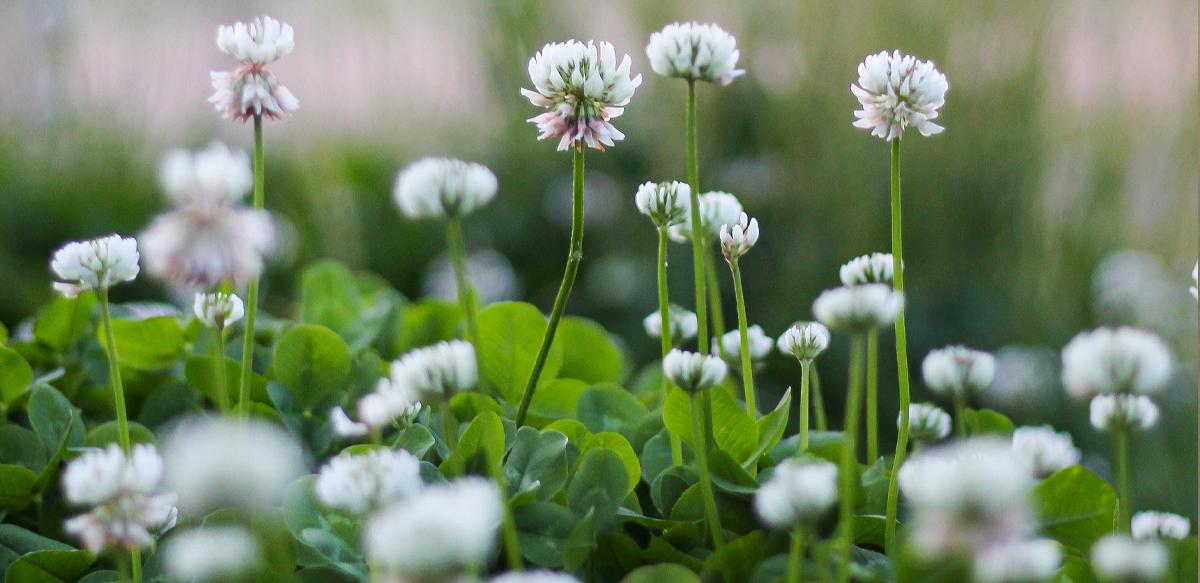on
Clover has made a name for itself the world over as a terrific forage crop for livestock and known to have health benefits for humans as well. Clover is a native of Northern Asia and Europe, however many types of clover are widely available in the USA.
There are obvious similarities between the red and white varieties, but also a few surprising differences (apart from their color). Let’s have a look at both clovers in terms of their benefits to livestock (including honey bees) and then to humans.
The Differences

The main differences between the two varieties take the form of growth habits and their corresponding management.
Red clover grows vertically – new shoots start from the crown and grow upright, until the point at which the plant is ready to flower. The quality of the fodder quickly decreases once red clover has flowered, so it’s important that you cut it back when it reaches about a 20 percent bloom stage, to ensure the feed is still good for your animals.
While this may be more effort, red clover will usually stay palatable to animals for an extra month in the year when compared to white clover. Red clover has a life cycle of 2-3 years, by which time you may want to rotate your crops anyway. Allowing your red clover to flower and seed should give you a decent amount of cover for the next year, if you so choose.
White clover, in comparison, grows relatively short, and spreads using stolons (horizontal above-ground stems). This can create a thick, low growing mat that will continue to spread until it hits a barrier. This type of growth generates both leaves and flowers at the same time, so the forage remains at a good quality all year round, without the need to cut it back.
Due to this spreading, white clover doesn’t have the limited life cycle red clover does. While that’s a good thing for those that want to keep the plant around, it can make rotating to your next crop a little more work. The spreading will also help keep invasive weeds at bay.
Essentially, red and white clover offer the same product with different delivery methods. Depending on what your situation is, you may see the benefit in either a low-maintenance, aggressive white clover, or a slightly higher-maintenance, yet more tranquil red clover.
The Similarities

Both varieties of clover are cool season perennial legumes. They both make for terrific fodder choices because of their high yield. High in protein and fibre, they both offer a fantastic feed option for livestock. You can feed more animals from a field of clover than you can from almost any other fodder option available.
Red and white clover require regular moisture to survive. The drought conditions found across much of Australia will often prove too much. Couple this with the fact that both clovers have evolved to handle cooler climates and tend to struggle in extreme heat, and the use of both varieties is limited to Australia’s damper and more temperate regions, or where irrigation is readily available.
The flip side of the cool season coin is that all clovers will cope fairly well with frosts and excess moisture. You’ll rarely find any issues relating to waterlogging or frost damage with either red or white clover.
Both red and white clover can act as a living mulch. This plant family is famous for its nitrogen production, which can help to re-enliven tired soils. Whether it’s used as mulch between fruit trees, or as a fodder crop as part of good crop rotation, the benefits on your soil can be great. When used as part of a seed mix, it can help spur the growth of the companion grasses.
Finally, both red and white clover can be excellent at promoting biodiversity on your land. The existence of clover will encourage all sorts of beneficial wildlife to visit your property, particularly birds and bees.
Human Health Benefits

Herbalists revere red clover for several purported health benefits, including detoxification, decongestion and reducing inflammation. It is also high in calcium, magnesium, iron, and vitamin C .
Red clover is also considered a rich source of isoflavones, an antioxidant associated in some studies with combating certain types of cancer, including breast cancer and prostate cancer. The isoflavones in red clover have also been found beneficial in reducing bone loss and menopausal symptoms in healthy women.
Harvesting red clover:
Best picked in spring or early summer when the flavor is sweeter. Harvest red clover blossoms early in the day when the dew has dried. Cut fully open blossoms that are brightly colored, avoid browned flowers. Leave them on stems for drying purposes. Washing the blossoms to remove dirt and bugs and then spread out on a drying rack. Once the blossoms are thoroughly dry, snip from stems and store in an airtight container.
Red Clover Tea:
A tea from red clover is simple to make. Pour 8 ounces of boiling water over 1 Tablespoon dried red clover blossoms. Let steep for 10 minutes. Strain and enjoy. As an iced tea, it is good for soothing menopausal hot flashes, and as hot tea can sooth coughs in adults and children, especially with the addition of some honey.
Who should not have clover:
Women who are pregnant or breastfeeding should not take red clover because of the natural phytoestrogens found in the plant. There are some blood-thinning properties to red clover so hemophiliacs and folks on blood thinners should avoid it as well.
Edible white clover:
White clover has not been found to possess the same constituents or health benefits. However, all of the aerial parts of the clover plant are edible: leaves, stems, flowers, and seed pods. The dried leaves and flowers are slightly sweet and can leave behind a faint vanilla-like flavor.
Use the leaves raw in salads or dry for baked goods later. The flowers make a delicious tea and can be used dried or fresh.
Remember that no herbs have been FDA-approved for medical use and you should always consult with your doctor before taking red clover tea for any health-related purpose. All clovers, including white, possess some amount of vitamins A, E, C, B-2, and B-3, calcium, chromium, lecithin, magnesium, potassium and silicium.
So there you have it, you can share clover with your livestock and both see benefits from it.
Get access to premium content and more!





